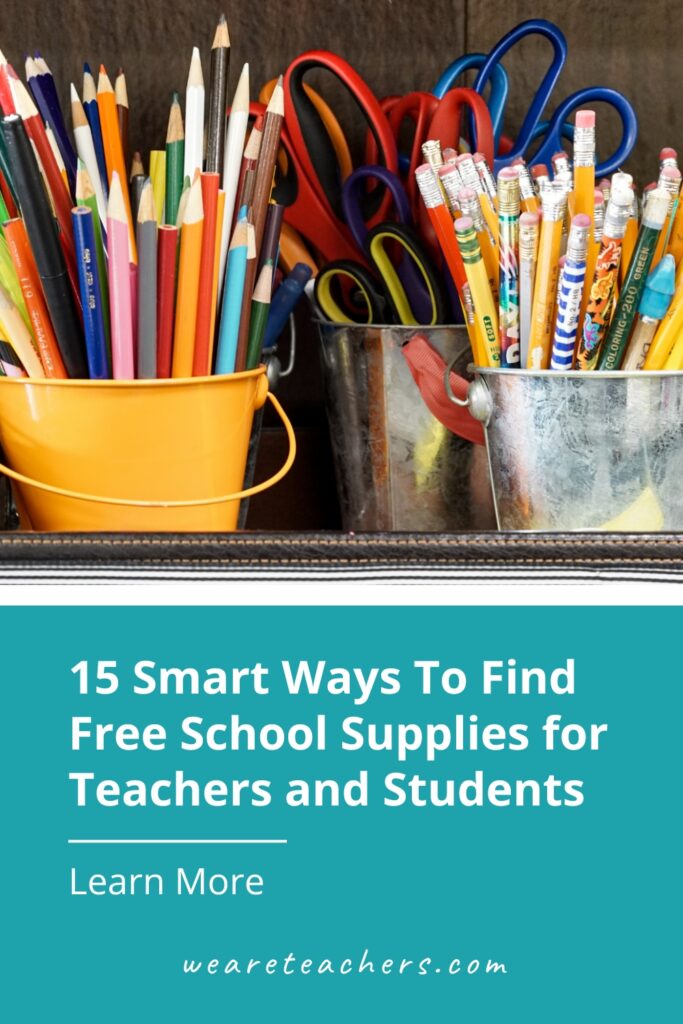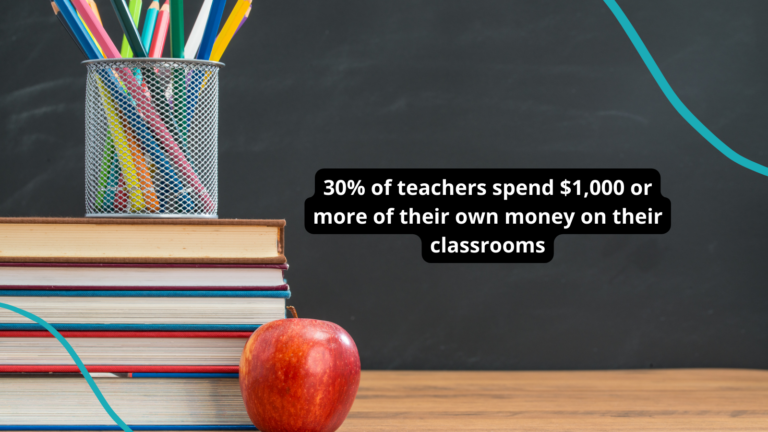Here’s a shocking statistic: According to a survey by the U.S. Department of Education, a whopping 94% of teachers spend their own money on classroom supplies. What’s more, they fork over an average of nearly $500 each year! Parents and families spend a bundle too, often more than they can really afford. That’s why we’ve rounded up these options for tracking down free school supplies. Every teacher and student deserves to have the materials they need to support learning, and these ideas can help.
1. Freecycle
This site was started as a way to connect people who had stuff to give away with people who needed or wanted that stuff. Join or start a local group specifically for teachers, or simply scan your area’s postings for free school supplies or other classroom items.
Learn more: The Freecycle Network
2. Amazon Wish List
If you haven’t set up your own classroom wish list on Amazon yet, what are you waiting for? Plenty of people are happy to donate supplies but don’t know what teachers really need (or may not have time to shop). When you set up a wish list, folks simply click to buy, and supplies are sent straight to whatever address you choose.
Learn more: How To Set Up and Share an Amazon Teacher Wish List
3. Donors Choose
While not all schools permit teachers to use this site, many do. It can be a terrific way to organize an ongoing fund for school supplies, or to find the money to sponsor a specific student, family, or project.
Learn more: 7 Donors Choose Tips for Teachers
4. Local Charitable Organizations
Make sure your students and their families are aware of local back-to-school backpack giveaways. These are really popular now, especially in bigger cities. Kids can receive a backpack full of free school supplies, donated by the community. If your area doesn’t offer any backpack giveaway events, consider organizing one of your own.
Learn more: How To Host a Back-to-School Backpack and Supply Drive (Volunteers of America)
5. Corporate and Website Giveaways
As back-to-school season approaches, many school supply companies offer their own contests and giveaways to teachers and students. The best way to find out about these is usually to follow these companies on social media. Many teacher websites have their own giveaways too, including WeAreTeachers, so be sure to check them out!
Learn more: WeAreTeachers Giveaways and Contests
6. Corporate Donations
As they say, it doesn’t hurt to ask. The worst they can say is no! Reach out to companies that make or sell the supplies you need, and find out if they’re willing to make what’s known as an “in-kind” donation. This means that instead of money, they simply provide you with free school supplies. (You may need to check with your local school district or admin for permission before making these kinds of requests.)
Learn more: How To Land a Corporate Donation for Your School
7. Local Businesses
Chat up the owners of small businesses to see if they have any supplies they can donate. Or ask if they’d be willing to put out a collection box where employees or customers can donate supplies, and swing by once a week or so to pick up any donations.
8. Online Groups (Craig’s List, Facebook Marketplace, etc.)
As long as you take precautions, online swap-and-shop groups can be a terrific place to pick up free school supplies. Browse local listings, or put out a request to see if anyone has what you’re looking for. Just remember to protect your personal information, and meet in a safe place to pick up items.
Learn more: 7 Ways To Stay Safe When Using Facebook Marketplace
9. Bartering
Here’s a fun idea: At a school staff meeting, ask teachers to bring any extra supplies they have so they can trade with others. For instance, one teacher might have a giant bin of used crayons and will be happy to trade half of it for a collection of scrap paper or yarn remnants. You can also designate a spot in the staff room for folks to leave free-for-all items, or set up a bartering day for a local teacher group.
10. Class Parents
Teachers are often surprised by the generosity of parents when they’re asked directly for help. Be specific in requesting what you need, and make it easy by referring them to an online wish list if you can. Not every family will be able to donate, but finding a few you can count on makes everything a lot easier.
Bonus tip: If you’re willing to accept gently used supplies, let parents know about that too! They might have a big tub of crayons their kids have outgrown or lots of half-used notebooks lying around. In some classrooms, anything helps.
11. Grants
There are a lot of organizations that provide money to teachers for all sorts of things, including school supplies. And don’t be overwhelmed by the idea of a grant application; many times, those that are for smaller amounts aren’t difficult at all.
Learn more: The Big List of K-12 Education Grants for Teachers
12. End-of-Year Surplus
We absolutely love this idea from teacher Joy S: “My 7th and 8th grade students have the supplies in their lockers but won’t bring them to class! Then at the end of the year when they clean out lockers, they try to throw it all away, unused and sometimes unopened.
“So I set up donation boxes in my classroom, and stand there while they’re cleaning lockers and collect all of the notebook paper, pencils, pens, highlighters, glue sticks, perfectly good 3-ring binders that they’re going to just toss … sometimes a calculator, even though they’ll need it in HS. Then I don’t fret when the next year uses up the supplies. I haven’t had to buy notebook paper for 6 years.”
13. Turn Trash Into Treasure
“At any given time, I can find enough pencils and pens dropped in the hallway and on the floor,” shares teacher Jessica W. “That’s how I keep my stash supplied.” Brilliant!
14. Family and Friends
Put out the word to your own family and friends to keep an eye out for any possible supplies. Encourage them to be creative too. Someone who travels a lot might be willing to snag free pens and pads of scratch paper from hotel rooms. An office doing a big clean-out might have a bunch of 3-ring binders they could empty and pass along. Folks with kids who dine out frequently could collect and bring home the barely used crayons their little ones used to scribble on place mats. The opportunities are endless once you really start looking for them!
15. Depths of the Supply Closet
This one may seem obvious, but you’d be surprised how many schools have completely usable supplies hidden in the backs of closets and cabinets or packed in boxes. If you’re willing to do some digging, you may find treasures hiding in your own school. Custodians or administrative assistants can often point you in the right direction to start your hunt.
Where do you find free school supplies for your classroom or your students? Come share your ideas in the WeAreTeachers HELPLINE group on Facebook.
Plus, 21 Teacher-Tested Ways To Find Free or Cheap Stuff for Your Classroom.


